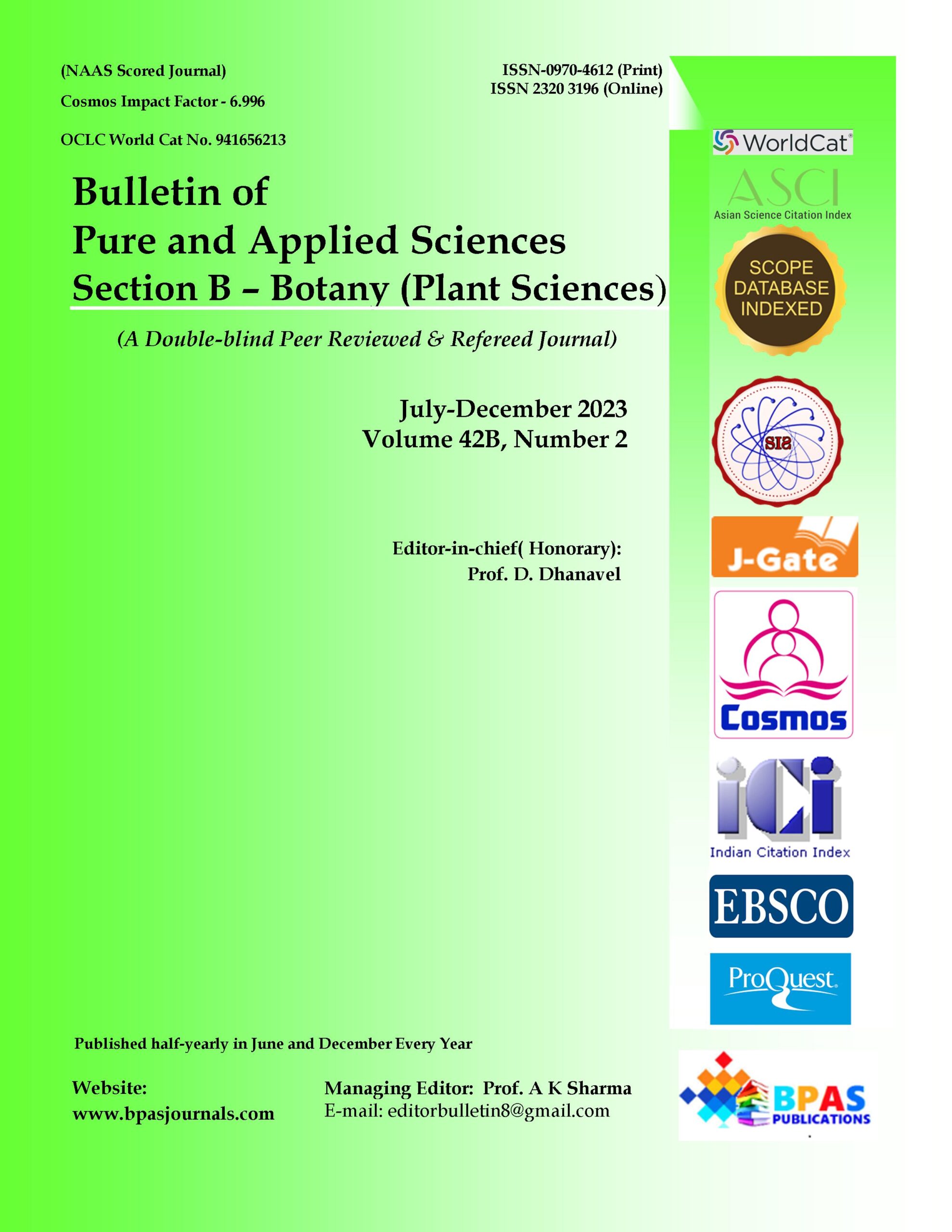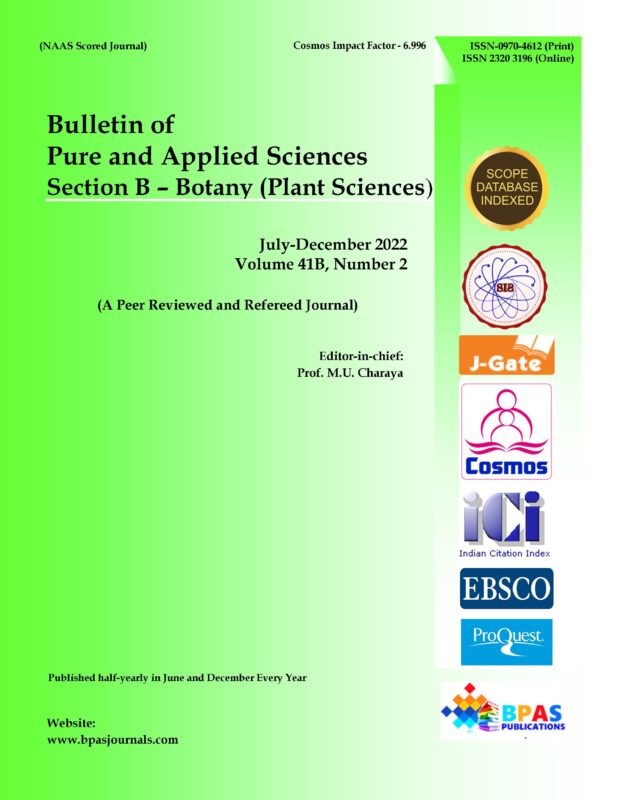New Collections and Observations on Gypsophila L. taxa in Türkiye
9.38$
1Hasan Özçelik* and 2Fevzi Özgökçe
| Bulletin of Pure and Applied Sciences.
Botany, Vol.42 B, No.2. Original Research Article |
Categories: 42B(2), JUL-DEC 2023, BPAS-Botany
Description
Description
1Hasan Özçelik* and 2Fevzi Özgökçe
Author’s Affiliation
¹S. Demirel Univ., Faculty of Science and Arts, Department of Biology, Isparta-Türkiye
https://orcid.org/ 0000-0002-0207-0921
²Van Yüzüncü Yıl Univ., Faculty of Science, Dept. of Molecular Biology and Genethics, Van-Türkiye
https://orcid.org/0000-0002-3119-8561
*Corresponding Author:
Hasan Özçelik
- Demirel Univ., Faculty of Science and Arts, Department of Biology, Isparta-Türkiye
E-mail:
Received on 13.07.2023
Revised on 22.09.2023
Approved on 21.11.2023
Accepted on 28.11.2023
Published on 23.12.2023
Abstract
This study is carried out between 1994-2023 years in Türkiye. The Gypsophila is a problematic and important genus that needs revision but will take several years. In the article, geographical distributions, endemism, flowering and fruiting months, habitat preffering, phytogeography and IUCN danger category of Gypsophila taxa distributed in Türkiye are explained according to field observations and herbaria records. Belonging to 51 taxa (47 species), almost 980 collections from 400 localities were identified. Other 15 species not carried out by us. The results presented here are based on informations of Gypsophila taxa in the country. In the light of current information, there are a total of 65 taxa belonging to 62 species in the country and these taxa named in actual situation. 39 taxa of these plants are endemics to Türkiye. Almost 40 taxa from 62 species in Türkiye shows natural distribution in Eastern Anatolia region. This situation shows that; 2/3 of Gypsophila taxa is in Eastern Anatolia region and endemic. Irano-Turanian element ratio in the genus is higher than this value. Species of the genus are distributed according to rock, climatic and geographical region. 9 taxa are indicators of gypsum areas. Among the plants in the paper Irano-Turanian elements 36, Saharo-Arabian element 1, Mediterranean elements 7, Euro-Siberian elements 4, Euxine elements 2; Cosmopolitan 1. Endemism; relict endemic 1, local and regional endemics 11, other endemics 20, nonendemics 19 as rare 1 taxon. Distributions to pytogeographical regions of endemic taxa as follows; endemic Irano-Turanian elements 23, endemic Mediterranean elements 6 and endemic Euro-Siberian elements 2. Weeds growing in fields are 4 taxa. There are new interesting geographical distributions for almost 20 taxa. Distributions to life forms of the taxa are Ch: 33, T: 14 and Chz: 4 taxa. Distributions to IUCN Threatened Cathegories of the taxa are Lc: 19, CR: 10, VU: 9, cd: 8, EN: 4, NT: 1. These two factors are dominant in the high level of endemism. 10 taxa in 0-500 m, 21 taxa in 500-1000 m, 26 taxa in 1000-1500 m, 24 taxa in 1500-2000 m, 17 taxa in 2000-2500 m, 7 taxa in 200-3000 m, 1 taxon in 3000-3500 m are naturally growing and vertical distribution. 40 taxa on steppe vegetation and slopes, 18 taxa on rocky (calcer, volcanic and conglomerate rockies) and their crevices, 14 taxa on gibsous rocky places, 10 taxa alpinic pastures /meadows, 4 taxa on macquis vegetation, 4 taxa on sandy soils, 6 taxa on forest (pine and oak) and opens, 16 taxa on fallow fields and margins and roadsides, 5 taxa on saline soils and 5 taxa on stream bads are naturally growing in Türkiye. Flowering months: 2 taxa in April, 17 taxa in May, 38 taxa in June, 40 taxa in July, 23 taxa in August, 1 taxon in September. Fruiting monts: 1 taxon in May, 12 taxa in June, 46 taxa in July, 42 taxa in August, 13 taxa in September, 2 taxa in November. The gene center of this genus has been estimated as the Eastern Anatolian region (Türkiye) in Irano-Turanian phytogeographical region. Five diversity areas in Türkiye identified: Lakes region, Mountaining areas in East Anatolia region, Region of Sivas, Erzincan Malatya, Tunceli, Erzurum, Bayburt, Gümüşhane, Region of Niğde, Aksaray, Ankara, Çankırı, Konya, Çorum, Yozgat, Region of Eskişehir, Kütahya and Bursa are very important areas in diversity for the genus. Existences of G. linearifolia in the country have not become definite. It was seen samples of G. muralis, G. antari, and G. laricina in fields in the country.



